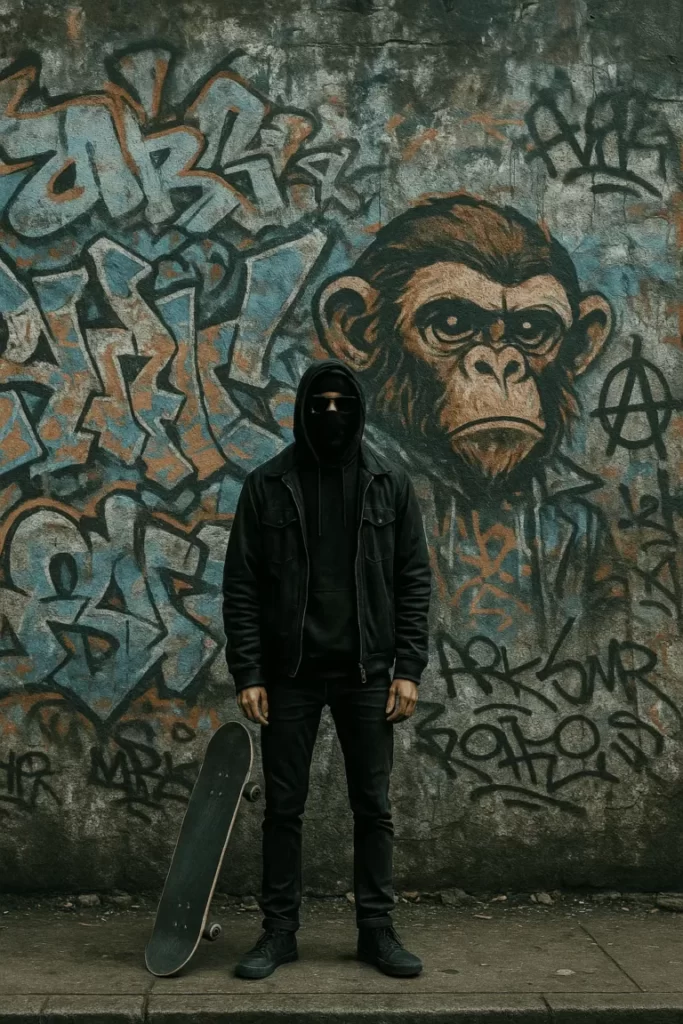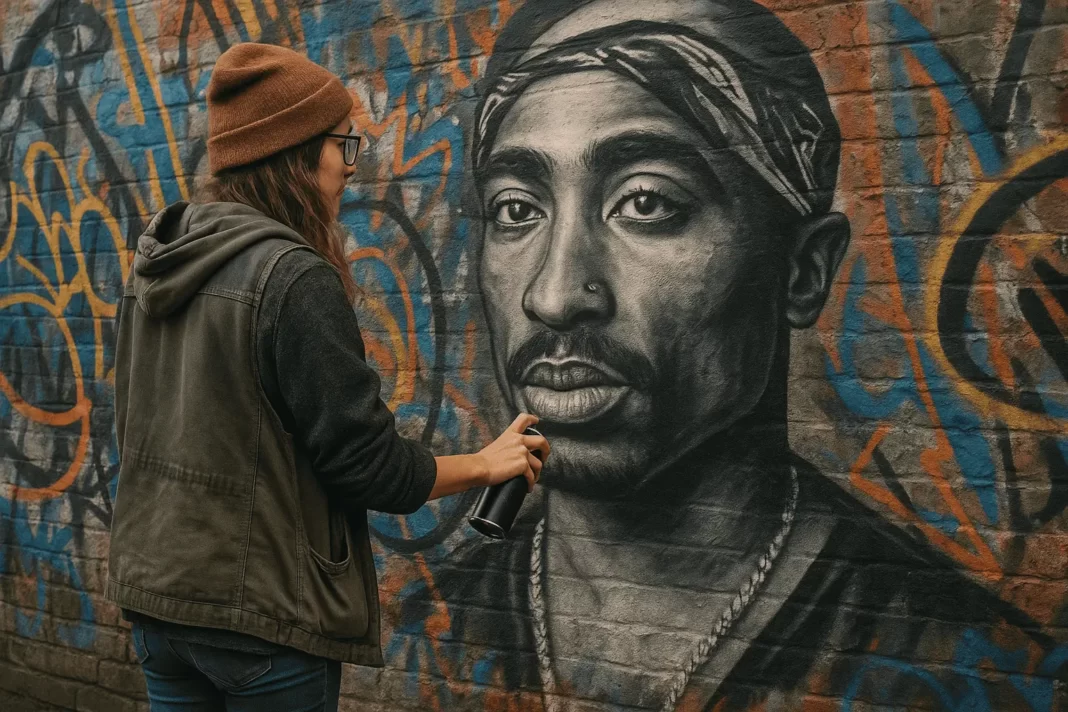Graffiti was never just paint on walls — it’s always been a message.
What started as fast tags in the subways of New York in the late 1960s wasn’t art for galleries. It was code from the streets — names, statements, presence. It screamed: “I exist. You will see me.”
By the 1980s, wildstyle, throw-ups, and burners took over train lines and concrete corners. Crews rose. Territories formed. Lettering evolved into language. From the Bronx to Berlin, spray cans became the new megaphones.
But graffiti never stood still.
When the system tried to clean the walls, graffiti moved underground, digital, global. From freight trains to Instagram scrolls — the message adapted, but never softened.

Graffiti Today: The City Talks Back
Modern graffiti isn’t just protest — it’s identity.
It’s kids with spray cans in 2025 shouting louder than algorithms.
Street artists blend old-school handstyles with glitch art, neon layers, AI distortions. Tags become symbols. Pieces become protests.
Graffiti today is not a phase — it’s permanent rebellion in a world obsessed with control.
Why We Wear the Wall
At Wish Discover, graffiti isn’t background — it’s our blood.
Our prints, colors, and messages are built from the same concrete poetry.
What the wall says — we wear.
Because the streets don’t forget. And neither do we.
→ Drop incoming. Paint lives. So do you.




